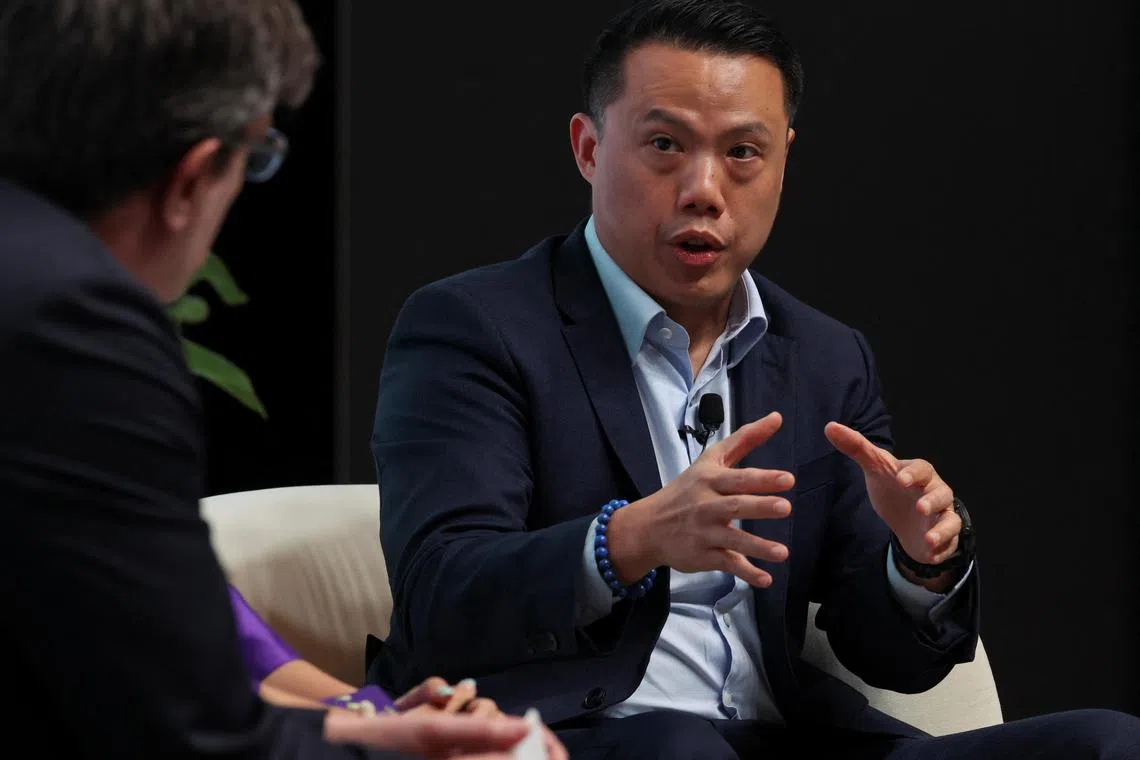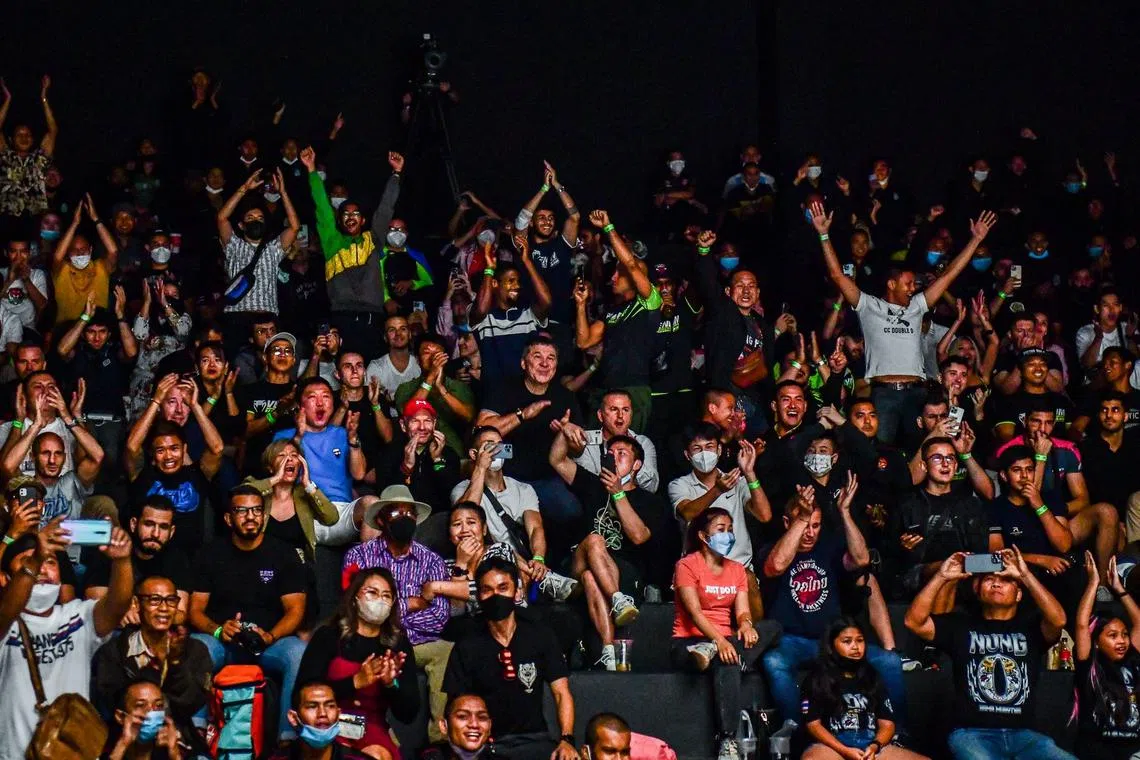Pathway to profitability: One Championship spreads wings in Asia and beyond
The Middle East and the US are strategic expansion markets, says co-founder and president Teh Hua Fung

ONE Championship – the company that’s produced dozens of mixed martial arts (MMA) world champions such as Angela Lee, Stamp Fairtex and Aung La N Sang over the years – is busy growing its footprint in Asia and beyond.
The Singapore-based promoter has a firm presence in Bangkok, where it stages the weekly One Friday Fights event at the Lumpinee Boxing Stadium. These shows are beamed to some 195 countries during Aisa prime-time hours.
Last month, One Championship announced the relocation of its global production hub from Singapore to Bangkok, with the move aiming to “centralise production” and better support the company’s expanding content operations.
Outside of the Thai capital, One Championship continues to stage major live events – there will be one show in Tokyo in November, and another in the US state of Colorado in June 2026. Earlier this year in February, the company held its second event in Qatar.
“Asia remains our core, with the Middle East and the US as strategic expansion markets,” said co-founder and group president Teh Hua Fung in an interview with BT Weekend.
Teh, who joined the company in January 2018 as chief financial officer and gradually moved up the ranks, spoke about a wide range of issues such as the geographic focus and why he’s confident that One Championship remains firmly on a path towards profitability.
What are your responsibilities as co-founder and president?
I run the business with (chairman and CEO) Chatri Sityodtong. We make the big decisions together with our leadership team. I oversee global expansion and business development. The areas of focus are capital markets, group strategy, and building partnerships with both businesses and governments.
Where are the main commercial opportunities these days?
The Middle East is a region that has very strong tailwinds – a young and very digitally savvy population, and strong government support for sports and entertainment.
We are growing our operations in Qatar – it’s part of the Gulf Cooperation Council, and those countries have a combined population of 60 million. Qatar represents the starting point of our entry into the Middle East, and we are going to focus on that. If you look at the broader Middle East and North Africa region, you have very large countries like Egypt that have a big appetite for sports.
The US remains a very key market for us – it’s the largest sports market in the world. Our five-year partnership with Amazon Prime Video runs through the middle of 2027, and we have already hosted two events in Denver.
Today, we are the only Asia-based sports property with live events carried on Amazon Prime Video in US primetime hours. This places us alongside the likes of the NFL, MLB, Nascar, WNBA and soon, the NBA. As a Singapore-headquartered company, that’s something we are very proud of.

What about Singapore?
Singapore remains our global HQ. It’s home to our senior leadership, investor relations and strategic planning functions. We value Singapore’s world-class infrastructure, global connectivity and deep talent pool.
We also cherish and appreciate our longstanding working relationships with government agencies here like Singapore Tourism Board, Sport Singapore, the Infocomm Media Development Authority, Economic Development Board and Enterprise Singapore – all of whom have been important partners in our journey.
Revenue in the last five financial years has seen a steady increase. What’s the road to profitability like, and how are you getting there?
Our group-level financials are filed in the Cayman Islands, in line with our re-domiciliation several years ago. The trend is clear. Since our peak investment year in 2019, costs have declined steadily while revenues have grown in both volume and variety.
A question I often get is: It’s been more than a decade (One Championship was established in 2011), so why are you still unprofitable?
We are not profitable yet, but the path is very visible now. That said, a precise timing is hard to predict in this business. Many of our key revenue drivers such as broadcast rights, sponsorships and hosting fees are large, multi-year deals that tend to close in uneven cycles.
While we have always been confident in the direction, it’s hard to call the precise timing of profitability given the natural lumpiness of the business.

What are the challenges?
We have made a strategic decision to concentrate our efforts on One Championship, which is our core combat sports business. We are now in the process of winding down One Esports.
The combat sports vertical is more strategic long-term – we own all the underlying intellectual property, and the format has proven demand and monetisation upside. We will continue to pursue gaming and gaming-adjacent opportunities, such as One Fight Arena.
Building a global sports property requires heavy upfront investment. Unlike one-off event promoters or circuses, sports media businesses are full-stack ecosystems – you need a global brand, world-class athletes, live event infrastructure, broadcast capabilities, international distribution, and strategic partnerships.
All of this requires a lot of time and money to build, and you must reach a critical mass in audience before you start seeing serious monetisation.
This journey is not unique to One Championship. Formula 1 operated at a loss for decades before becoming a highly profitable business under Liberty Media. They had to build global infrastructure, including races across multiple regions, to expand their fanbase and eventually unlock commercial upside.
Once scale is reached, the economics shift dramatically. Like a theme park, it’s expensive to build but once it’s up and running, incremental revenue outpaces fixed costs, and margins expand. That’s the phase we are approaching now.
Decoding Asia newsletter: your guide to navigating Asia in a new global order. Sign up here to get Decoding Asia newsletter. Delivered to your inbox. Free.
Copyright SPH Media. All rights reserved.



